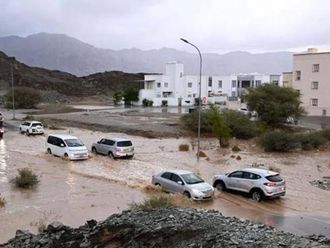Muscat: A Sultan Qaboos University (SQU) professor has urged authorities to make sure that infrastructure in the country is earthquake resistant as Oman was vulnerable to tremors.
“A major earthquake in future in Oman is a possibility,” said Prof. Khalifa Al Jabri from the Department of Civil & Architectural Engineering at the SQU, during his speech at a workshop on ‘Seismic Hazard Assessment for Oman’ organised by the Earthquake Monitoring Centre at the university campus today.
Al Jabri said that the unique location of Oman on the southeast corner of the Arabian Plate makes it susceptible to earthquakes over the years. “For many years, the authorities in the Sultanate have realised the importance of monitoring seismic activities in Oman and its neighbouring areas in order to set out rules, regulations and emergency plans in case major earthquakes might occur in future,” he added.
He advocated safety of people and properties in the country by civil engineers and planners. “They should design and build safe and robust structures that resist earthquakes,” reiterated the SQU professor.
The seismic hazard assessment project for Oman is divided into four phases: development of probabilistic and deterministic seismic hazard maps for Oman, seismic micro zonation and site effects for Muscat; development of shake and risk maps for Muscat; and development of earthquake design provisions for buildings in Oman.
The outcomes and results of the first two phases and the fourth phase were discussed in detail during the workshop.
The outcomes of this project, expected to be completed by the end of this year, will be useful not only to those dealing with seismic hazard assessment and loss estimation such as structural engineers, designers, geophysicists, etc, but also to other administrators in the country such as traffic planners, emergency response teams, utility departments and land use planners.
“The project is expected to provide the authorities concerned with a better understanding of the seismicity of the region and the ways to alleviate the effects of earthquakes that might occur in future,” hoped Prof. Al Jabri.
Delivering a presentation on the geology, tectonics and seismicity of Oman during the opening session, Dr. Ali Al Lazki from the Earth Sciences Department of SQU, said that Oman is under the threat of small to moderate earthquakes.
According to him, the country is under the threat of tsunamis from distant sources such as the Sunda-Java Trench in Indonesia and closer sources such as the Makran Subduction Zone in the northern Arabian Sea.











